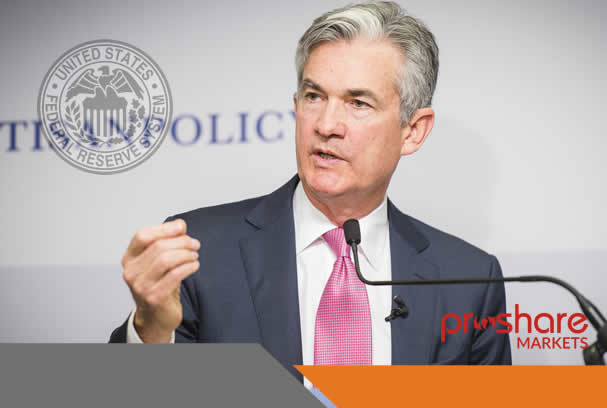The Federal Open Market Committee at the end of its two-day meeting, voted unanimously to raise interest rates by 25 basis points.
This is the first FOMC since the Silicon Valley Bank, Signature Bank, Credit Suisse and First Republic crisis.
Chairman of the Fed Mr. Jerome Powell said inflation is elevated and believed that an additional policy firming may be appropriate.
The Fed according to him gave a forecast of 5.1% for the inflation level in the country at the end of 2023 and 4.3% in 2024.
America’s Central Bank Chief signaled that it still expects higher rates even as he reiterated the Fed’s commitment, to returning the United States to the inflation target of 2%.
He stated that the U.S Banks are sound and resilient but the recent events of banks facing challenges will weigh on growth.
Powell said the FOMC will use all the necessary tools to ensure financial system stability and avert a contagion on the banking system.
Speaking to financial correspondents on the SVB crisis, he agreed that there is a need to strengthen supervision and regulation of the banks.
He acknowledged that tighter credit conditions will have effects on households, but assured the financial market that the Fed will ensure a safe and sound banking system.
Mr. Mathew Hornbach Global Head of Macro Strategy, Morgan Stanley in his analysis of the Fed decision, pointed out that there was a balancing of financial system stability which should buoy the markets.
Prof. Diane Swonsk Chief Economist, KPMG speaking on the decision via the Bloomberg platform, said the Fed will continue to use its tools to separate financial stability from price stability.
Transcript of Chair Powell’s Press Conference Opening Statement
Good afternoon. Before discussing today’s meeting, let me briefly address recent developments in the banking sector. In the past two weeks, serious difficulties at a small number of banks have emerged. History has shown that isolated banking problems, if left unaddressed, can undermine confidence in healthy banks and threaten the ability of the banking system as a whole to play its vital role in supporting the savings and credit needs of households and businesses.
That is why, in response to these events, the Federal Reserve, working with the Treasury Department and the FDIC, took decisive actions to protect the U.S. economy and to strengthen public confidence in our banking system. These actions demonstrate that all depositors' savings and the banking system are safe. With the support of the Treasury, the Federal Reserve Board created the Bank Term Funding Program to ensure that banks that hold safe and liquid assets can, if needed, borrow reserves against those assets at par. This program, along with our long-standing discount window, is effectively meeting the unusual funding needs that some banks have faced and makes clear that ample liquidity in the system is available. Our banking system is sound and resilient, with strong capital and liquidity. We will continue to closely monitor conditions in the banking system and are prepared to use all of our tools as needed to keep it safe and sound. In addition, we are committed to learning the lessons from this episode and to work to prevent events like this from happening again.
Turning to the broader economy and monetary policy, inflation remains too high, and the labor market continues to be very tight. My colleagues and I understand the hardship that high inflation is causing, and we remain strongly committed to bringing inflation back down to our 2 percent goal. Price stability is the responsibility of the Federal Reserve. Without price stability, the economy does not work for anyone. In particular, without price stability, we will not achieve a sustained period of strong labor market conditions that benefit all.
The U.S. economy slowed significantly last year, with real GDP rising at a below-trend pace of 0.9 percent. Consumer spending appears to have picked up this quarter, although some of that strength may reflect the effects of swings in the weather across the turn of the year. In contrast, activity in the housing sector remains weak, largely reflecting higher mortgage rates. Higher interest rates and slower output growth also appear to be weighing on business fixed investment. Committee participants generally expect subdued growth to continue. As shown in our Summary of Economic Projections, the median projection for real GDP growth stands at just 0.4 percent this year and 1.2 percent next year, well below the median estimate of the longer-run normal growth rate. And nearly all participants see the risks to GDP growth as weighted to the downside.
Yet the labor market remains extremely tight. Job gains have picked up in recent months, with employment rising by an average of 351 thousand jobs per month over the last three months. The unemployment rate remained low in February, at 3.6 percent. The labor force participation rate has edged up in recent months, and wage growth has shown some signs of easing. However, with job vacancies still very high, labor demand substantially exceeds the supply of available workers. FOMC participants expect supply and demand conditions in the labor market to come into better balance over time, easing upward pressures on wages and prices. The median unemployment rate projection in the SEP rises to 4.5 percent at the end of this year and 4.6 percent at the end of next year.
Inflation remains well above our longer-run goal of 2 percent. Over the 12 months ending in January, total PCE prices rose 5.4 percent; excluding the volatile food and energy categories, core PCE prices rose 4.7 percent. In February, the 12-month change in the CPI came in at 6 percent, and the change in the core CPI was 5.5 percent. Inflation has moderated somewhat since the middle of last year, but the strength of these recent readings indicates that inflation pressures continue to run high. The median projection in the SEP for total PCE inflation is 3.3 percent for this year, 2.5 percent next year, and 2.1 percent in 2025. The process of getting inflation back down to 2 percent has a long way to go and is likely to be bumpy.
Despite elevated inflation, longer-term inflation expectations appear to remain well anchored, as reflected in a broad range of surveys of households, businesses, and forecasters, as well as measures from financial markets.
The Fed’s monetary policy actions are guided by our mandate to promote maximum employment and stable prices for the American people. My colleagues and I are acutely aware that high inflation imposes significant hardship as it erodes purchasing power, especially for those least able to meet the higher costs of essentials like food, housing, and transportation. We are highly attentive to the risks that high inflation poses to both sides of our mandate, and we are strongly committed to returning inflation to our 2 percent objective.
At today’s meeting the Committee raised the target range for the federal funds rate by 1/4 percentage point, bringing the target range to 4-3/4 to 5 percent. And we are continuing the process of significantly reducing our securities holdings.
Since our previous FOMC meeting, economic indicators have generally come in stronger than expected, demonstrating greater momentum in economic activity and inflation. We believe, however, that events in the banking system over the past two weeks are likely to result in tighter credit conditions for households and businesses, which would in turn affect economic outcomes. It is too soon to determine the extent of these effects and therefore too soon to tell how monetary policy should respond. As a result, we no longer state that we anticipate that ongoing rate increases will be appropriate to quell inflation; instead, we now anticipate that some additional policy firming may be appropriate. We will closely monitor incoming data and carefully assess the actual and expected effects of tighter credit conditions on economic activity, the labor market, and inflation, and our policy decisions will reflect that assessment.
In our SEP, each FOMC participant wrote down an appropriate path for the federal funds rate based on what that participant judges to be the most likely scenario going forward. If the economy evolves as projected, the median participant projects that the appropriate level of the federal funds rate will be 5.1 percent at the end of this year, 4.3 percent at the end of 2024, and 3.1 percent at the end of 2025. These are little changed from our December projections, reflecting offsetting factors. These projections are not a Committee decision or plan; if the economy does not evolve as projected, the path for policy will adjust as appropriate to foster our maximum employment and price stability goals. We will continue to make our decisions meeting by meeting, based on the totality of incoming data and their implications for the outlook for economic activity and inflation.
We remain committed to bring inflation back down to our 2 percent goal and to keep longer-term inflation expectations well anchored. Reducing inflation is likely to require a period of below-trend growth and some softening of labor market conditions. Restoring price stability is essential to set the stage for achieving maximum employment and stable prices over the longer run.
To conclude, we understand that our actions affect communities, families, and businesses across the country. Everything we do is in service to our public mission. We at the Fed will do everything we can to achieve our maximum employment and price stability goals. Thank you. I look forward to your questions.
 Lagos, NG • GMT +1
Lagos, NG • GMT +1











 339 views
339 views














 Sponsored Ad
Sponsored Ad
 Advertise with Us
Advertise with Us









